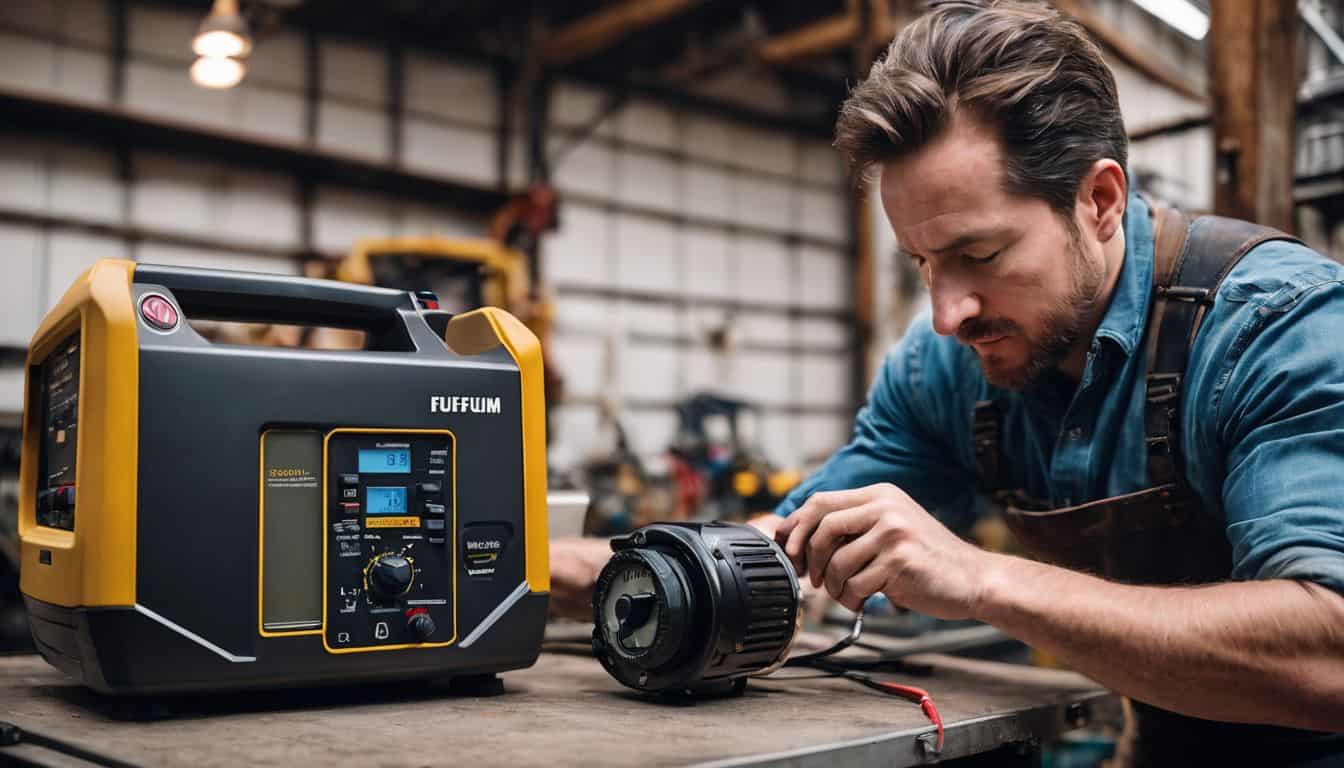Understanding load capacity is crucial when selecting and operating a portable generator. While the basics of portable generators may seem straightforward, properly managing electrical loads requires careful consideration of various factors to ensure safe and efficient operation. This comprehensive guide will help you understand and manage your generator’s capabilities effectively.
Types of Electrical Loads
Different electrical devices place distinct demands on generators. Resistive loads, such as heaters and incandescent lights, draw consistent power and are relatively simple to calculate. However, inductive loads from motors and compressors require special attention due to their high starting power requirements. Understanding these differences helps prevent overload situations and ensures reliable operation.
Inductive loads typically need 3-5 times their running wattage during startup. For example, a refrigerator that runs at 800 watts might require up to 2,400 watts momentarily when the compressor kicks in. This surge in power demand can overwhelm an inadequately sized generator, even if it handles the running load comfortably. Modern appliances often incorporate soft-start technology to reduce these demands, but older equipment may still require significant startup power.
https://www.youtube.com/watch?v=Qj3Bh3bwjxU
Power Calculation Fundamentals
Accurate power calculations ensure your generator can safely handle all connected devices. When calculating wattage needs for portable generators, the basic formula (Watts = Volts × Amps) provides a starting point, but real-world applications require consideration of both running and starting watts. Always include a 10-20% safety margin above your calculated needs to account for unexpected power demands and ensure stable operation.
When multiple devices operate simultaneously, their combined starting watts become particularly important. A generator that adequately handles running watts may still fail if too many devices start at once. This makes understanding load management crucial for reliable operation. Careful planning of device startup sequences can help prevent overload situations and ensure consistent power delivery.
Strategic Load Management
Effective load management begins with prioritizing essential devices and implementing a strategic startup sequence. Start with larger loads when the generator has maximum capacity available, then gradually add smaller loads. This approach prevents overloading and ensures stable operation throughout your power needs.
Operating your generator between 50-80% of its rated capacity provides optimal efficiency and longevity. This range allows for sudden power demands while avoiding the wear and inefficiency of constant light loading. Regular monitoring of connected loads helps maintain this optimal operating range and prevents performance issues.
Understanding Common Load Requirements
Household appliances vary significantly in their power demands. Modern appliances often have their power requirements listed on a nameplate or in their manual. Understanding these requirements helps prevent overload situations and ensures reliable operation of essential equipment during power outages.
A refrigerator typically requires 800 watts running but needs 1,600 watts at startup. Air conditioners demand even more, often requiring 1,500 watts running but 4,500 watts at startup. These substantial differences between running and starting watts highlight the importance of proper generator sizing and load management.
Construction equipment and power tools present unique challenges due to their high starting demands and frequent cycling. Air compressors, for instance, may need 2,500 watts to start but only 1,000 watts to run continuously. This variation in power demands requires careful planning and load management to maintain stable generator operation.
Proper Generator Sizing
Selecting the right generator size requires careful consideration of your specific needs. For essential circuits during outages, focus on critical loads like refrigeration, heating/cooling, and essential lighting. Construction sites need additional capacity for power tools and equipment, while recreational uses might prioritize lighter loads but require longer runtime.
The total power requirement isn’t simply the sum of all possible loads. Instead, consider realistic usage patterns and implement load management strategies to optimize generator performance. This approach ensures reliable power delivery while avoiding the cost and inefficiency of an oversized generator.
Safety and Performance Optimization
Generator performance can be affected by environmental factors such as temperature and altitude. High temperatures reduce efficiency, while altitude decreases available power by about 3.5% per 1,000 feet above sea level. Consider these factors when sizing your generator and managing loads to ensure reliable performance under all conditions.
Voltage stability is crucial for sensitive electronics. Modern generators often include automatic voltage regulation, but proper load management remains essential for maintaining stable output. Monitor your generator’s performance indicators and respond promptly to any signs of overloading or unstable operation.
Regular maintenance and proper load management work together to ensure optimal generator performance. Keep detailed records of connected loads and their power requirements to help optimize future usage patterns and prevent overload situations.
Understanding and applying these principles thoughtfully ensures your generator operates safely and efficiently while meeting your power needs. Regularly monitoring and adjusting load patterns helps optimize performance and extend generator life. Remember that proper load management isn’t just about preventing problems—it’s about maximizing the value and reliability of your generator investment.
Conclusion
The key to successful generator operation lies in understanding and respecting its capabilities while implementing effective load management strategies. This knowledge helps ensure reliable power delivery when you need it most, whether during emergencies, at construction sites, or for recreational activities.

Leave a Reply